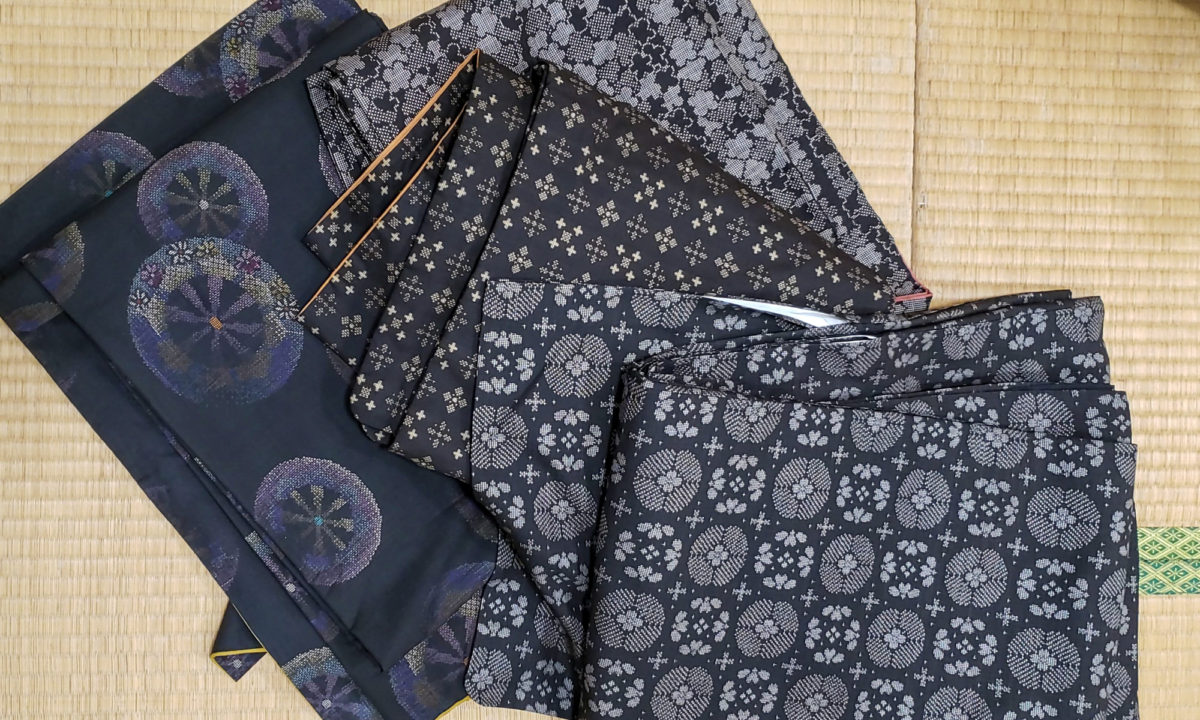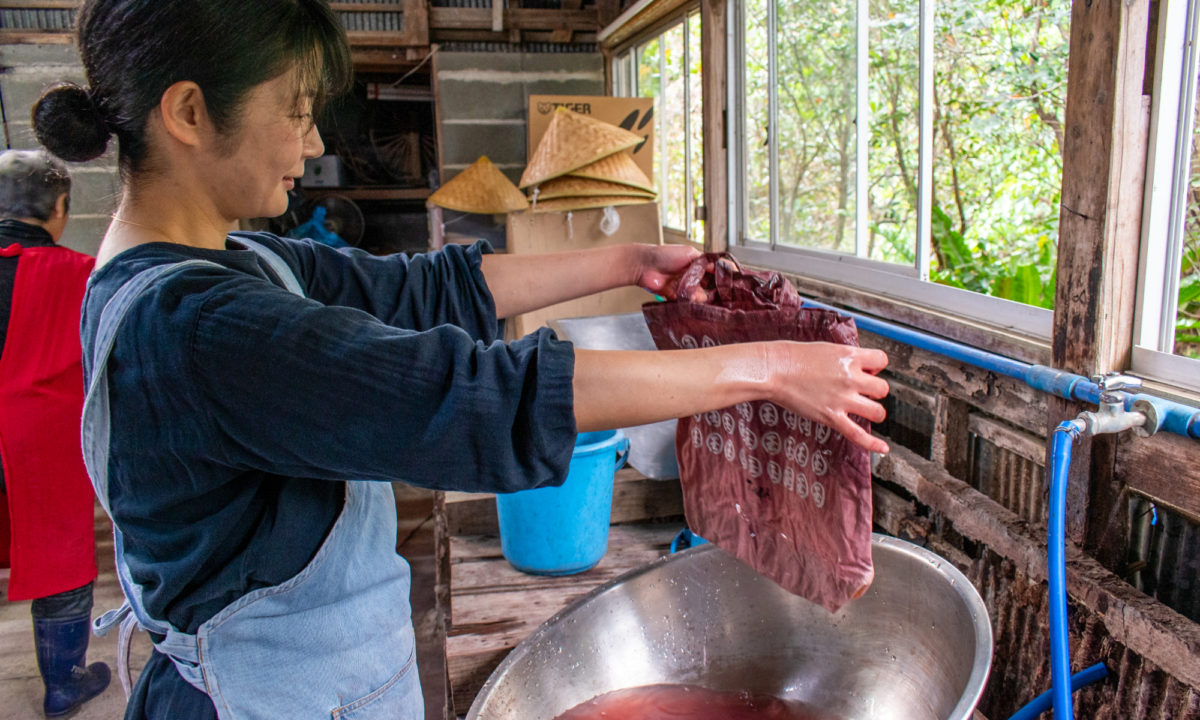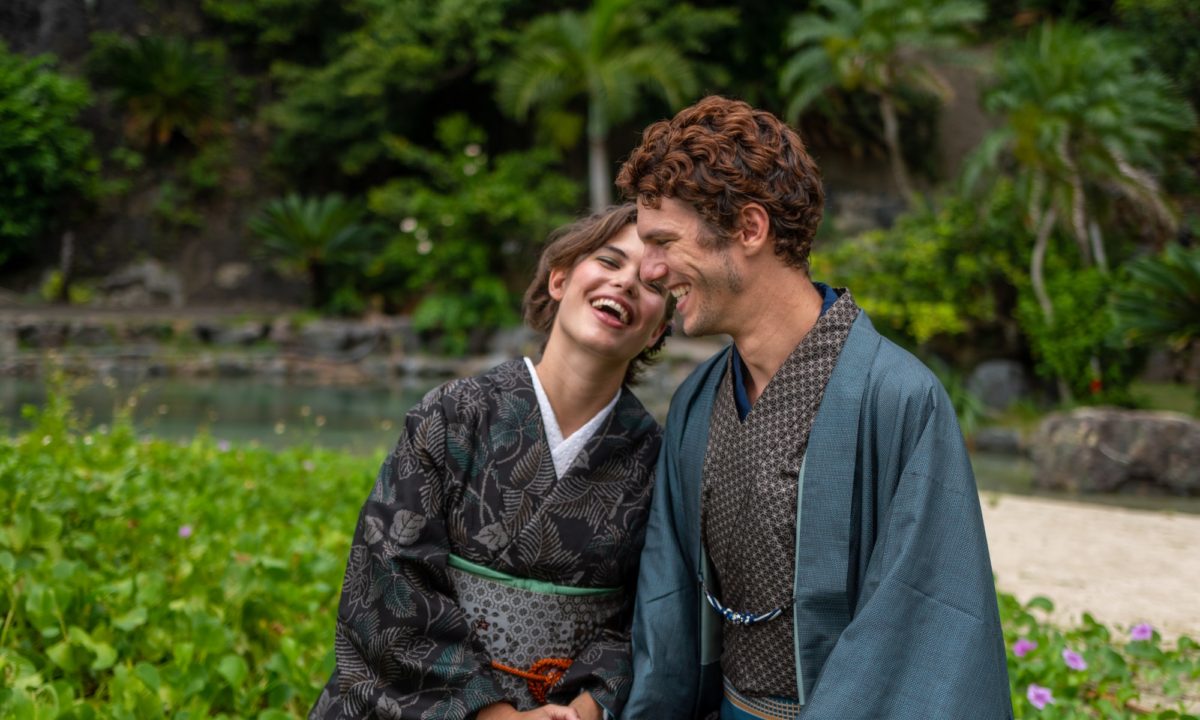Oshima Tsumugi Kimono Rental & Photoshoot

In recent years, there have been increased efforts to spread the word about the unique attributes of Oshima Tsumugi. In this article I’d like to introduce a few places that visitors can try on a kimono made from Authentic Oshima Tsumugi, and share some pictures from a kimono photoshoot!
Introducing Oshima Tsumugi
Oshima Tsumugi silk fabric has been woven on Amami Oshima for over 1,300 years, and it is said to be derived from the pongee woven textile that originated in India. Oshima Tsumugi utilizes 100% raw silk, and were traditionally woven by women at home as a source of additional income-- a practice that persists to this day. Unlike other kimono garments, which have the patterns printed upon the fabric, the designs for Oshima Tsumugi are all woven into the fabric in what is called a splash pattern, which creates intricate, double-sided kimono designs.

Traditional patterns for Oshima Tsumugi have a variety of origins, but most were based on the endemic plants and animals of Amami Oshima, or are known by the village that created it. For example, the Akakina Pattern originated in the community of Akakina in Kasari (present day Amami City). Due to technological advancements, Oshima Tsumugi patterns diversified to include many kinds of designs, including floral, geometric, and more.

Oshima Tsumugi silk is dyed using dye that is found naturally on Amami Oshima, but the iconic deep black of Oshima Tsumugi is created by alternating between dyeing the fabric in dye taken from boiling sharinbai hawthorn wood chips then inserting that into a mud pool. Oshima Tsumugi fabric is also dyed in indigo, which creates a navy color, just the sharinbai, creating a pink or reddish hue, or even not dyeing the silk at all to make a white textile.

The arduous dyeing procedure and the intricate weaving process—which takes 40 ‘processes’ in total-- means a single roll of authentic Oshima Tsumugi fabric takes from 6 months to a year to complete. Kimono made with Oshima Tsumugi silk are thus more expensive and are regarded as the most sophisticated type of kimono.
Renting an Oshima Tsumugi Kimono
The photos in this article were taken of individuals who rented their kimono from the Authentic Amami Oshima Tsumugi Cooperative.
The Authentic Amami Oshima Tsumugi Cooperative based in Naze, Amami City offers authentic Oshima Tsumugi kimono for rent, and participants are free to sightsee or take photos at whatever location they choose.
The time limit is 5 hours, anywhere between 10 AM and 4 PM (excluding weekends and holidays). It costs 10,000yen per person for the program, and includes the fee for having the employees help you into the kimono, as well as cleaning fees, etc. For more information or to reserve a spot to participate, please contact the Authentic Amami Oshima Tsumugi Cooperative at the following (Japanese only):
- 【Tel】
- 0997-52-3411
- 【Email】
- info@oshimatsumugi.or.jp
- 【Email】
- amami.island.info@gmail.com
For English assistance with reservations, please contact the Tsumugi & Tourism Promotion Division at the Amami City Hall at the following:

Photoshoot
The first location of the day was the garden of Yagijima Hotel in Naze. The garden features a pond and other plants unique to Amami, making it a great photo location.




Next was Ohama Seaside Park & Museum, about a 15-minute drive from the heart of Naze. The lush greenery against the ocean backdrop makes a dynamic shooting location, and exploring the nearby Museum was perfect while it began to drizzle outside.





Finally, we had a quick walk through Naze to our lunch spot, NOMAD Curry & Café, for a bite to eat and some indoor photos.



The Authentic Amami Oshima Tsumugi Cooperative has a wide variety of kimono and accessories to choose from, and even has kimono long enough for taller people (our male model is over 180cm tall). Walking around in kimono can be quite hot, though, so we recommend taking photos outside when it is a bit cooler, or choosing mostly indoor locations on warmer days.
Other Places to Try on Oshima Tsumugi Kimono
There are other places that have Oshima Tsumugi kimono to try on, and some places even have dyeing workshops where visitors can try out dyeing cloth in the traditional way.
- Yumeori-no-Sato
- https://www.yumeorinosato.com/
- Dyeing Workshops:
- Tsumugi-mura
- http://www.tumugi.co.jp/
- Kanai Kogei
- http://www.kanaikougei.com/
- Aikana Kobo
- http://www.aikanakobo.com/
WRITER
Rosemary White
Born and raised in New Mexico, U.S.A, Rosemary began working as a Coordinator for International Relations for Amami City in August, 2018. Between running the Explore Amami social media accounts, translating materials, writing articles, and more, Rosemary spends time snorkeling & scuba diving, visiting cafes, or taking photos in the wilderness of Amami.


